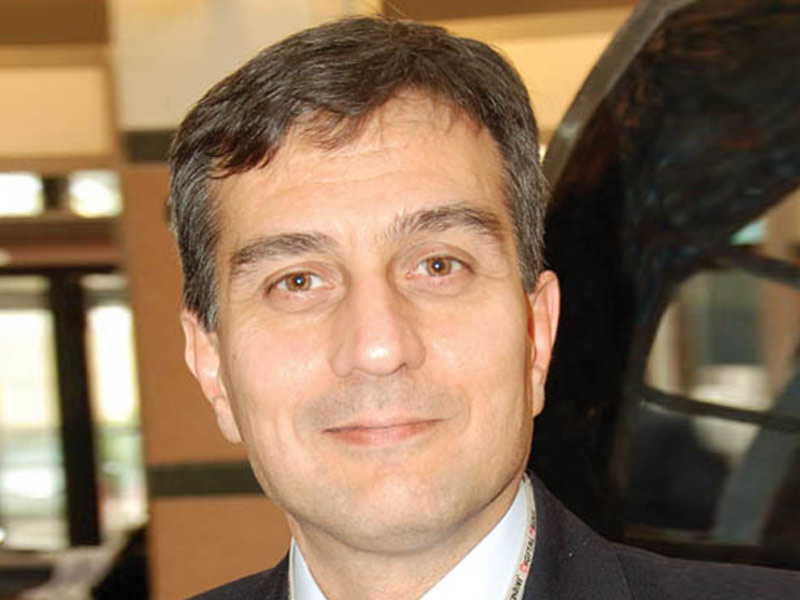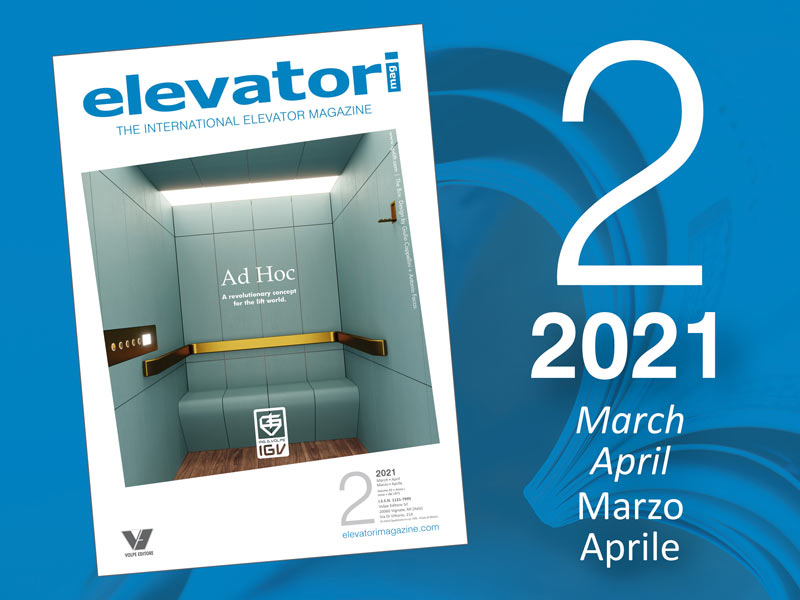Voices from the World: Celik
Ferhat Celik
Edited by Matteo Volpe
We host the international expert for the lift sector, Mr. Ferhat Celik (Director Engineering & Business Development at Blain Hydraulics GmbH), to discuss about standards and industry future.
Ferhat Celik, the interview
Who is representing the component manufacturers in Europe?
European Lift & Lift Components Association (Elca) was mainly the voice of small and medium size companies and was a useful platform to represent and protect the rights of component manufacturers. It was unfortunate that Elca had to be closed following to the global financial crisis. To my knowledge, there is not a direct representation of component manufacturers in Europe for the time being.

What do you think about the new ISO 8100 regarding the Global Standard, that will include European standards and American ASME?
There are a few lift standards in use, all have similar level of safety with some different requirements. As a result, an existing standard in one economic area may not be accepted in other parts of the world that makes international trade difficult. Harmonization of the existing standards is expected to remove the barrier to international trade and to ensure the same level of safety all over the world. In this respect, ISO 8100 will provide worldwide approval, reduce administration costs and ease the global trading. It can also enhance transparency in applicable technologies, result in innovations and improve safety. ISO 8100-1 and ISO 8100-2 are mainly based on EN 81-20 and EN 81-50, which seems like a good advantage for the European Economic Area. However, uncertainties in the global trade under economic and political enforcements should not be overlooked.
Are the European companies ready for this challenge (that might happen in 2023, the year of possible completion of the ISO 8100 standards)?
ISO 8100 standards are likely to be completed in 2023. However, countries will be able to decide whether or not to implement this approach immediately. We are all well experienced with the difficulties in the transition of EN 81-20/50. It was not very easy. In order to ease the transition, ISO TC 178 Committee has already prepared some guidelines (such as, Global Essential Safety Requirements and Global Conformity Assessment Procedure) for lift manufacturers and inspection bodies aiming at working internationally. On the other hand, the effect of national and regional rules and regulations for type examinations, periodical inspections, modernizations etc., are still in the grey zone. I think that national lift associations should work hard to clear grey areas and update the industry.
What will be the role of Europe then?
Technology is the strongest advantage in world competition. In the lift industry, however the technological gap amongst the world-leading companies and others is rapidly closing. Moreover, high manufacturing costs in advance economies force companies to move their plants to emerging markets, where the needs of competitive manufacturing and local market dominancy are satisfied. The East European countries, Turkey, India and China are some to mention as examples. The emerging economies, having the manufacturing competence, are improving at innovation. Moreover, attractiveness of the local market draws more investments. I eventually expect most of large-size component and lift manufacturing companies to leave Europe.
What is the future of the hydraulic lift?
Since MRL type traction lifts were introduced to the market hydraulic lifts lost their major market share. The worldwide market share of hydraulic lifts dropped below 8%. In contrary, the number of hydraulic lift sales increases yearly because of the increase in global lift installations. At present, the main applications of hydraulic lifts have been restricted to platform, home, goods lifts as well as the modernization of existing lifts. Most of the commercial and residential applications have been taken over by the machine-room-less traction lifts in the last 20 years. This is because of the fact that hydraulic lift industry could not cope with the invasion of MRLs, could not defend their valid arguments against large-scale lift companies and raise their voice against twisted arguments, like energy consumption and environmental concerns.
Earlier popularity of hydraulic lift is due to breakdown free operation, easy installation, low initial cost, having the best records in safety and servicing costs. For example, hydraulic lifts are 11 times safer than traction lifts in seismic zones and spare parts are freely available in the market without facing enforcing contracts. On the other hand, the last 20 years’ experience with MRLs, enlightens the weaknesses of MRL solutions and the negative perception about hydraulic has started changing gradually. At present, a massive problem that hydraulic lift companies should overcome is the loss of hydraulic knowledge in the lift market in the last 20 years. Though hydraulic lifts are easier to instal, run, service and have much better safety records, lift companies are inclined to offer traction MRLs because of lack of hydraulic knowledge. As a result, hydraulic lifts are offered with a much higher price to eliminate the choice. This is one of the main reasons for having hydraulic lift pricing higher than traction MRLs in the market. The future of hydraulic lifts therefore, depends on enhancing and distributing the hydraulic knowledge in the industry, informing relevant players about benefits of hydraulic lifts and integrating hydraulic solutions with the latest technologies. The true application of these doings can bring hydraulic lifts back to the commercial and residential usage again, at best in earthquake danger areas.
Lifting platform: EN 81 41 and EN 81 42 will make lifts and lift platforms very similar, will they cause confusion in the market?
It should be reminded that the scope of the 2006/42 Machinery Directive can be used for lifting platforms. With the use of the harmonized standards however, the manufacturer will have the presumption of conformity with the Machinery Directive. The dividing line between lifts and lifting platforms is; the lifting equipment for the transportation of persons, persons and goods, goods only, if the carrier is accessible, whose speed is not greater than 0.15 m/s are within the scope of the Machinery Directive. That is, the speed is a main determining factor. EN 81-41 covers vertical lifting platforms for people with impaired mobility, having the lift speed not higher than 0.15m/s and the carrier is not completely enclosed. Obviously, the lifting height is limited by the very low speed and the deadman switch, which could make longer travels difficult to achieve due to long travel time and the need to press the button continuously. Thus, it is expected that the inconveniences by EN 81-41 will be overcome by introducing EN 81-42, which encompasses slow speed lifts with enclosed carrier. The work for EN 81-42 has been ongoing and it has been decided that speed should not to exceed 0.15m/s. In fact, this decision makes very much similarity with the EN 81-41 and creates confusion for companies to apply the correct standard. In addition, large overlapping between the two standards may generate grey areas and endanger safety. As long as speed is kept at 0.15m/s, a better solution could be expanding the scope of EN 81-41 to cover lifting platforms with an enclosed carrier. There are over 25,000 platform lifts installed in Europe, mainly by small and medium size lift companies. The effort in generating a new standard for slow speed lifts seems to serve some intentions to change the dominancy of the market.
Is the speed 0.15m/s too low for the platform lift? In your opinion is possible to increase the speed of platform lift to 0.25 m/s?
The current level of safety requirements of the harmonized standards is good enough to increase the speed of platform lifts to 0.20m/s or 0.25m/s. It should be recalled that inspection travels from the top of the carrier (under the applied safety measures) can be as high as 0.30m/s. It is hard to understand the reason for keeping the platform lift speed too low. The speed limit of platform lifts should be reconsidered to overcome tedious and long travels.
Will Chinese companies come to Europe to sell their products?
There is a negative perception about the quality of Chinese products in the European market, which is a serious mistake. We should remember that many of famous European electrical cars and lift brands are being produced in China with the required quality. Harmonizing this fact with worldwide acceptance of ISO 8100, the low labour cost and “China speed” I expect to see more Chinese lifts and lift components in the European market after 2023.

